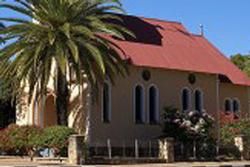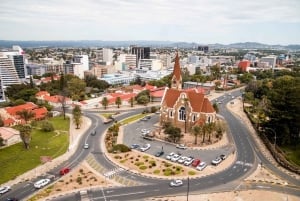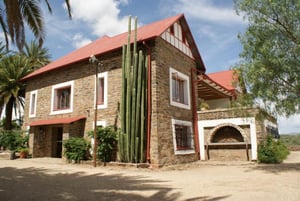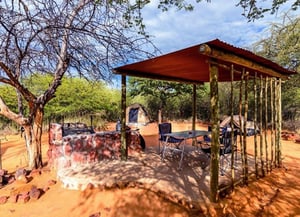Tsumeb
The origin of the name Tsumeb has been debated for many years, it has 3 different meanings in three local languages. In Herero, the name Otjisume means "place of frogs", for the Nama "place of the moss" and for the San Tsoumsoub means "to dig in loose ground". The town’s foundations are buried deeply in the mining sector and owes its existence to a rich mineral content. Between 1905 and 1996, the Tsumeb Mine yielded approximately 30 million tons of ore. The contents ranged from zinc and copper to lead and germanium. The mine was forced to close a few years ago due to flooding in the lower levels, upper levels have since reopened under the banner of Ongopolo Mining. The road from Otavi to the south into Tsumeb is quite beautiful, especially in the rainy season. With shops, banks and businesses, Tsumeb opens up the northern regions of Namibia to travelers wishing to venture into wilder parts. The Tsumeb Museum displays a wealth of artifacts from Himba and Bushmen tribes as well the richness of Namibia’s mineral inheritance. Ammunition and cannons from German colonial times are also exhibited. Raised up from the depths of the Otjikoto Lake where soldiers disposed of them to prevent enemy hands gaining, the old weaponry now stands proud once more. Local crafts and other forms of art are displayed at the Tsumeb Cultural Village as well as the Tsumeb Arts & Crafts Centre. The rich mining history of the town is still evident in many museum displays as well as around the town.





















